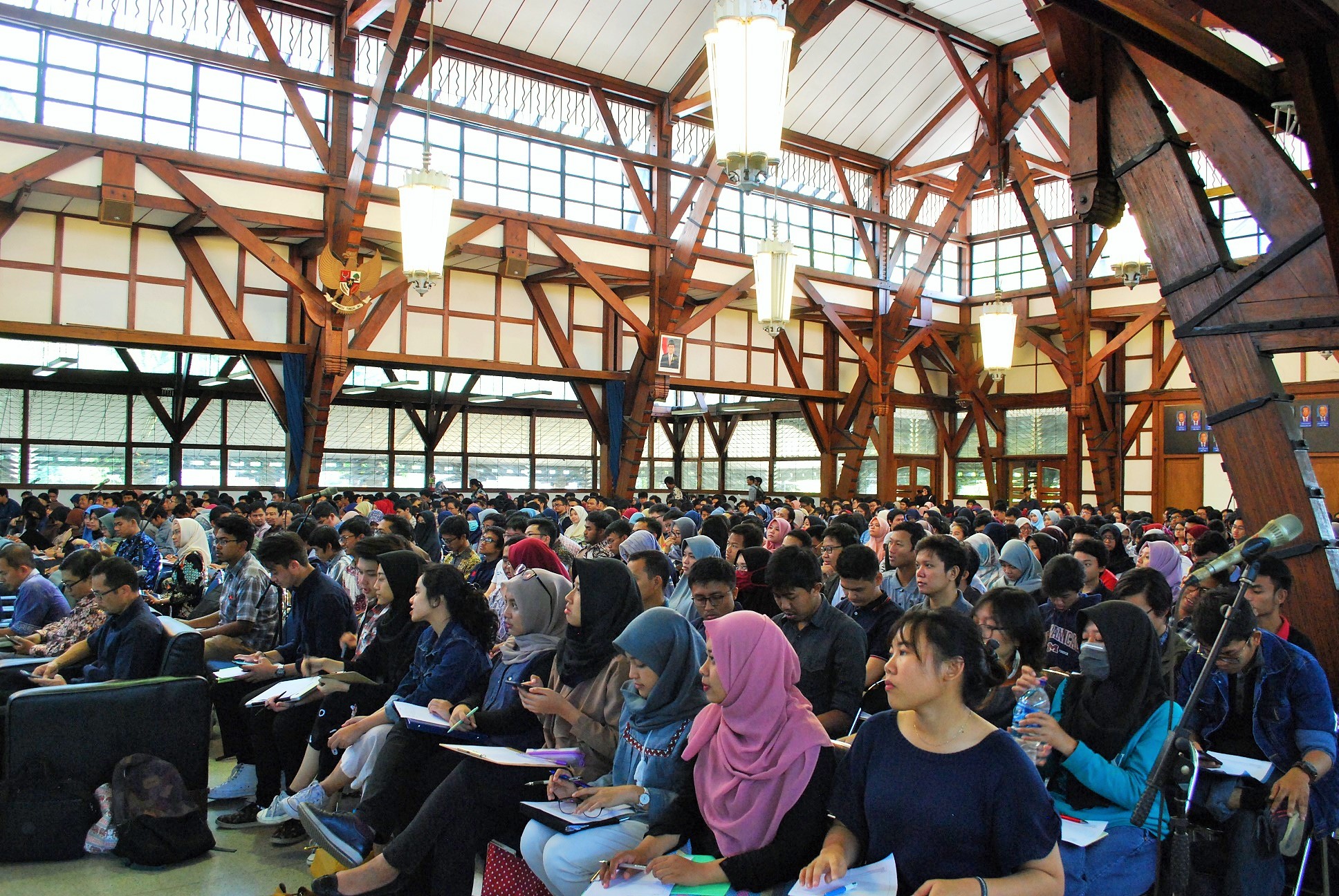The Beauty of Terracotta Architecture in Jatisura Village Square as ITB’s "Social Lab"
By Adi Permana
Editor Adi Permana
BANDUNG, itb.ac.id— Showcasing the diversity of terracotta materials, ITB designed the Jatisura Village Square in the hopes of inspiring others to display their uniqueness as well.
Like experiments in laboratories, architectural disciplines that are applied in community services can act as a link between the knowledge gained in universities and daily lives to solve real-life issues. Thus, the concept of a “social lab” arises when architects relied on their knowledge to apply and interact with the community.
In 2021-2022, ITB utilized the concept of a “social lab” in Jatisura Village Square, Jatiwangi, Majalengka, West Java. To restore the culture and dignity of clay art, the team is involved in the Terracotta City Movement initiated by JAF (Jatiwangi Art Factory), a local art community found in the area.
This community service focuses on encouraging the construction of municipal facilities and infrastructure- especially squares- using terracotta products. The architecture is intended as a product storefront that is expected to improve the production and selling value of clay-based businesses.
Designing the city square begins with transferring the idea of a Terracotta City into its architectural counterpart. Studies on the use of terracotta materials by renowned architects are conducted as well, in which the team found that terracotta can be used as an element of compressed structure, plane shaping, and wall covering. Variations of rigid-plastic, opaque-transparent, and fine-texture forms are also suggested in the study.
Next, the team selects the most suitable materials from the studios. They decided to choose hollow bricks, 20x20 tiles and paving elements from terracotta waste as materials to be used in the terracotta architecture of Jatisura Village Square. "They were chosen because of considerations in architectural construction and potential economic impact to visitors," Dr. Agus S. Ekomadoyo, Gagas Firas Silmi, S.T., and Agnas T. Maulana, S.T., members of the ITB team, explained.
Moreover, the team reviewed the characteristics of nearby infrastructures that possess unique morphologies. The Jatisura Village Square has only one accessible part to the public- the south side that faces the village hall. The other three sides are surrounded by elementary schools. On the other hand, Banyan trees are grown at the center of the square, which serves as a landmark and stage that faces the village hall. As the heart of daily communal activities, the final design must be prominent without interfering with the square’s main function.
Constructing the desired design results is a complicated process. The team often comes up against obstacles that need to be strategically dealt with so that the original plan can still be realized.
Three obstacles arise during construction. Firstly, internal conditions like cost, labor, and time constraints are difficult to handle. The supply of terracotta materials and the lack of experience in local workers also cause some minor problems in deciphering construction sketches and constructing buildings straight from the sketches.
Despite the adversities they went through, the construction has had an empowering impact on both the community and the ITB team. Local construction workers can learn from this project and gain more experience and knowledge. Thus, they can be recommended for other larger construction projects. As a social lab, this project was a successful constructive trial; with various perspectives, interests, and preferences, the designed architectures constructed become valuable evidence of the community’s learning process.

*This article has been published in ITB Engineering rubric of Media Indonesia. The full article can be read at https://pengabdian.lppm.itb.ac.id
Reporter: Sekar Dianwidi Bisowarno (Bioengineering, 2019)
Translator: Ruth Nathania (Environmental Engineering, 2019)

.jpg)

.jpg)
.jpg)
.jpg)

